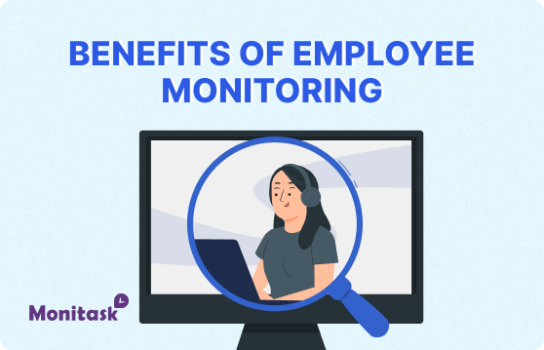What Is Webcam Monitoring?
Webcam monitoring is the practice of using computer cameras to observe and record employee activities in remote work settings. It's a controversial method that aims to enhance productivity but raises privacy concerns. Key aspects include: • Typically used for remote work surveillance • Can track work hours, productivity, and attendance • Raises significant privacy and ethical concerns • Legal implications vary by jurisdiction • Alternatives like productivity software exist
Webcam monitoring, also known as webcam surveillance or remote employee monitoring, is a contentious practice that has gained traction in the evolving landscape of remote work. This method involves employers using computer cameras to observe and record their employees' activities during work hours, ostensibly to ensure productivity and accountability in distributed work environments.
Understanding Webcam Monitoring
At its core, webcam monitoring is a form of employee surveillance that utilizes the built-in or external cameras on workers' computers. This practice can range from periodic screenshots to continuous video streams, depending on the employer's policies and the software used.
Common Features of Webcam Monitoring Systems
- Video recording: Continuous or intermittent capture of employee activities
- Screenshot capture: Periodic images of employee screens
- Activity logging: Tracking of keyboard and mouse usage
- Time tracking: Monitoring of work hours and breaks
- Facial recognition: Ensuring the intended employee is at the workstation
The Rise of Webcam Monitoring
The adoption of webcam monitoring has accelerated in recent years, particularly as remote work became more prevalent. According to a 2023 survey by ExpressVPN, approximately 78% of employers reported using some form of employee monitoring software, with webcam monitoring being a significant component.
Legal and Ethical Considerations
The legality of webcam monitoring varies significantly across jurisdictions. In the United States, for instance, federal law generally allows employers to monitor employees using company equipment, but state laws may impose additional restrictions.
Key Legal Considerations
| Jurisdiction | Legal Status | Key Points |
| United States | Generally legal with restrictions | Varies by state; consent often required |
| European Union | Heavily restricted | Subject to GDPR; strong employee privacy protections |
| Canada | Legal with limitations | Must be reasonable and respect privacy |
| Australia | Legal with restrictions | Requires notice and justification |
Ethically, webcam monitoring raises significant concerns about employee privacy, trust, and workplace stress. Critics argue that it can create a hostile work environment and erode employee morale.
Pros and Cons of Webcam Monitoring
Like any controversial practice, webcam monitoring has its advocates and detractors. Here's a balanced look at the potential benefits and drawbacks:
Potential Benefits
- Improved productivity tracking
- Enhanced security for sensitive information
- Accurate time and attendance management
- Potential for better remote team collaboration
- Easier identification of workflow bottlenecks
Potential Drawbacks
- Invasion of employee privacy
- Decreased trust and morale
- Increased stress and anxiety among employees
- Potential for misuse or data breaches
- Legal risks in certain jurisdictions
Implementation Considerations
For organizations considering implementing webcam monitoring, it's crucial to approach the process thoughtfully and transparently. Here are some key considerations:
Best Practices for Webcam Monitoring Implementation
- Develop a clear, written policy
- Obtain informed consent from employees
- Limit monitoring to work-related activities and hours
- Ensure robust data security measures
- Provide employees with control over their cameras
- Regularly review and audit the monitoring program
Remember: Transparency is key. Employees should always be aware of when and how they are being monitored.
Alternatives to Webcam Monitoring
Given the potential drawbacks of webcam monitoring, many organizations are exploring alternative methods to ensure productivity and accountability in remote work settings. Some popular alternatives include:
Comparison of Monitoring Methods
| Method | Privacy Impact | Effectiveness | Employee Acceptance |
| Webcam Monitoring | High | Medium | Low |
| Time Tracking Software | Medium | High | Medium |
| Project Management Tools | Low | High | High |
| Output-Based Evaluation | Low | Medium | High |
Cost Considerations
The cost of implementing webcam monitoring can vary widely depending on the scale of the organization and the sophistication of the system. Here's a rough breakdown of potential costs:
- Software licenses: ¥5,000 – ¥15,000 ($33 – $100 USD) per user per year
- Implementation and training: ¥750,000 – ¥3,000,000 ($5,000 – $20,000 USD) for medium-sized businesses
- Ongoing maintenance and support: Approximately 20% of initial implementation costs annually
- Potential legal consultations: ¥150,000 – ¥450,000 ($1,000 – $3,000 USD) per hour
Note: These figures are estimates and can vary significantly based on specific circumstances and vendors.
Employee Perspective
Understanding the employee perspective is crucial when considering webcam monitoring. A 2023 survey by the Workforce Institute found that 65% of employees would consider leaving their job if webcam monitoring were implemented without their consent.
I understand the need for accountability, but constant camera surveillance feels like a violation of trust. It's stressful knowing you're always being watched. – Anonymous Employee
To mitigate negative reactions, employers should:
- Clearly communicate the reasons for monitoring
- Involve employees in policy development
- Provide options for employee feedback
- Regularly review and adjust policies based on employee input
Future Trends
As technology evolves and workplace norms shift, the landscape of employee monitoring is likely to change. Some potential future trends include:
- AI-powered monitoring systems that focus on productivity metrics rather than visual surveillance
- Increased regulation around employee monitoring, particularly in privacy-conscious jurisdictions
- Development of employee-centric monitoring tools that provide mutual benefits
- Greater emphasis on trust-based management approaches as alternatives to surveillance
Conclusion
Webcam monitoring remains a controversial topic in the realm of human resources and employee management. While it can offer certain benefits in terms of productivity tracking and security, the potential negative impacts on employee morale, privacy, and trust are significant.
As we move forward, organizations must carefully weigh the pros and cons of webcam monitoring, considering not only the potential productivity gains but also the long-term impacts on company culture and employee relations. Ultimately, the most successful approaches to remote work management are likely to be those that foster trust, respect employee privacy, and focus on outcomes rather than surveillance.
Key Takeaway: While webcam monitoring can be a powerful tool for certain organizations, it should be implemented thoughtfully and in compliance with all applicable laws and ethical considerations. Alternative methods that respect employee privacy while still ensuring productivity should always be considered first.
For more information on employee monitoring laws and best practices, visit the U.S. Equal Employment Opportunity Commission or the European Commission's data protection page.


